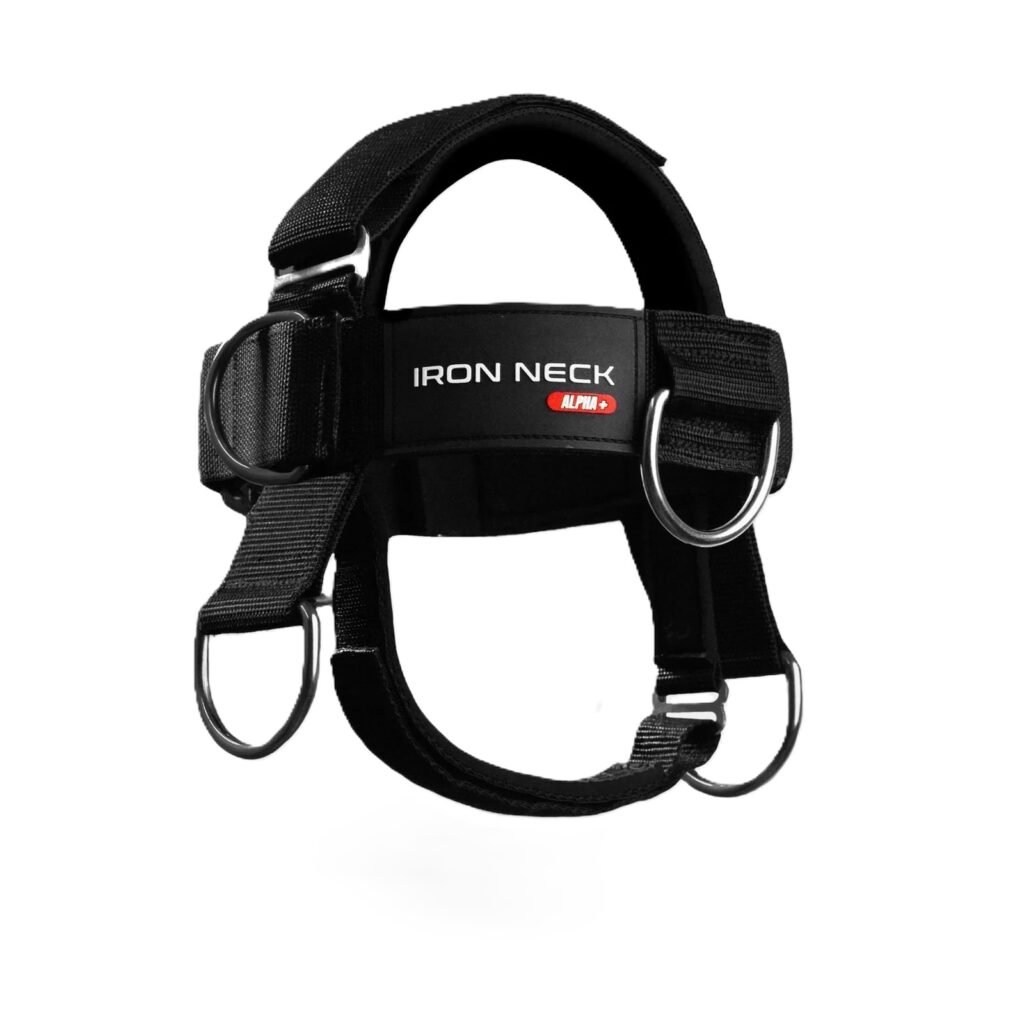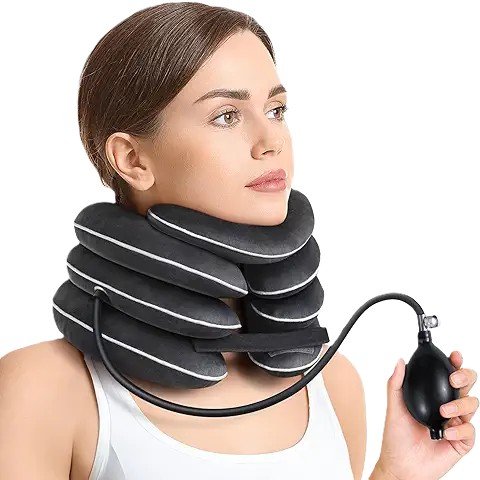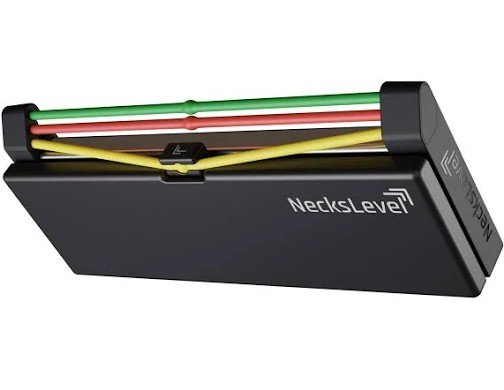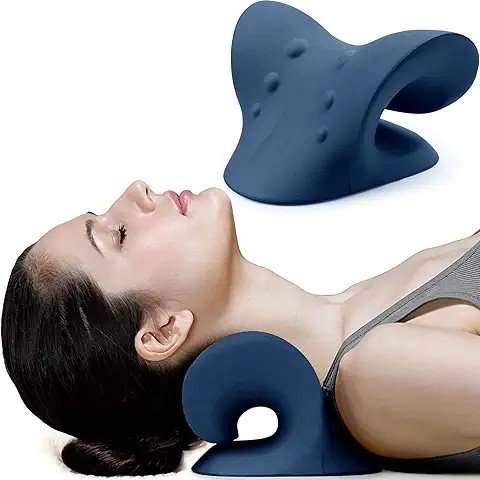Best Neck Strengthening Equipment
If you’re like me, you know the struggle of persistent neck pain. One day it’s the right side, the next it’s the left, it’s like my neck just can’t make up its mind! I’ve tried everything: massage, chiropractic adjustments, strength training, stretching, and while they all provide temporary relief, the pain and tightness always seem to creep back. The culprit? My daily routine. Spending hours hunched over a computer has taken its toll, and I know I’m not alone in this battle. Neck pain isn’t just an issue for older adults, it’s becoming increasingly common in younger people too.
What Can I Do to Fix Neck Pain?
First, let’s get one thing straight—you’re not alone. Neck pain has become an epidemic in the U.S., affecting millions of people every year. Whether it’s from poor posture, too much screen time, or physical strain, it’s one of the most common musculoskeletal complaints. Research from the National Library of Medicine shows that 30% to 50% of adults experience neck pain annually, with many developing chronic issues. Beyond the physical discomfort, the economic burden is massive, costing billions in healthcare expenses, lost productivity, and disability claims.
One major cause of neck pain? Weak neck muscles. Many people don’t realize their neck muscles aren’t providing enough support for their cervical spine. A study in the Spine Journal found that people with chronic neck pain often have up to a 50% reduction in neck muscle strength, a major contributor to poor posture and recurring pain. Weak muscles can lead to stiffness, nerve compression, and increased strain on surrounding joints.
But modern life isn’t doing us any favors. Tech neck—caused by spending hours staring at our phones and computers—puts excessive strain on the cervical spine. According to Clinical Biomechanics, for every inch your head moves forward, an extra 10 pounds of force is added to your neck. No wonder so many of us feel stiff and sore! While pain medication and passive therapies offer short-term relief, they don’t fix the underlying problem.
The Power of Strengthening: A Game-Changer for Neck Pain Relief
So, what’s the real solution? Well, what has worked best for me is Strengthening. When doing research for this blog I was lead to an article published in the Journal of Rehabilitation Research and Development that stated” targeted neck strengthening programs can reduce neck pain symptoms by up to 70%”. This happens because building strength in your deep cervical muscles improves posture and restores muscle balance which are the leading causes of neck pain.
But here’s the thing…it’s not just about strength. You also need flexibility. A strong yet stiff neck isn’t going to do you any favors. The key is strength training through a full range of motion, allowing tight muscles to loosen while simultaneously getting stronger.
Best Neck Pain Relief Categories
If you’re serious about fixing your neck pain, there are some great tools available to help. Here are 3 Categories of neck pain Tools that can help improve and give relief to neck pain :
Resistance
Resistance Devices – A comprehensive device that allows multi-directional resistance training to improve strength and mobility.
Resistance Bands – Simple, affordable, and great for controlled neck exercises.
Weighted Head Harness – A traditional but effective way to add resistance to neck training.
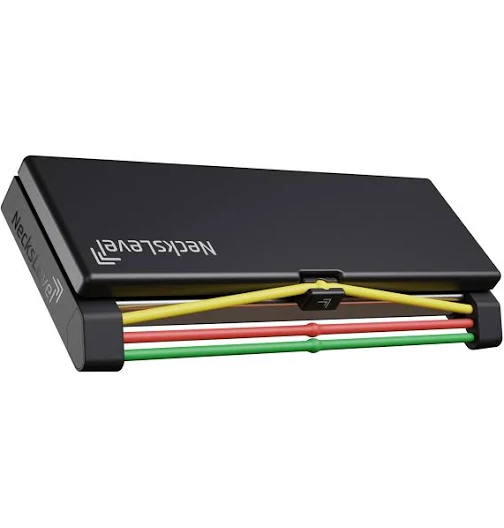
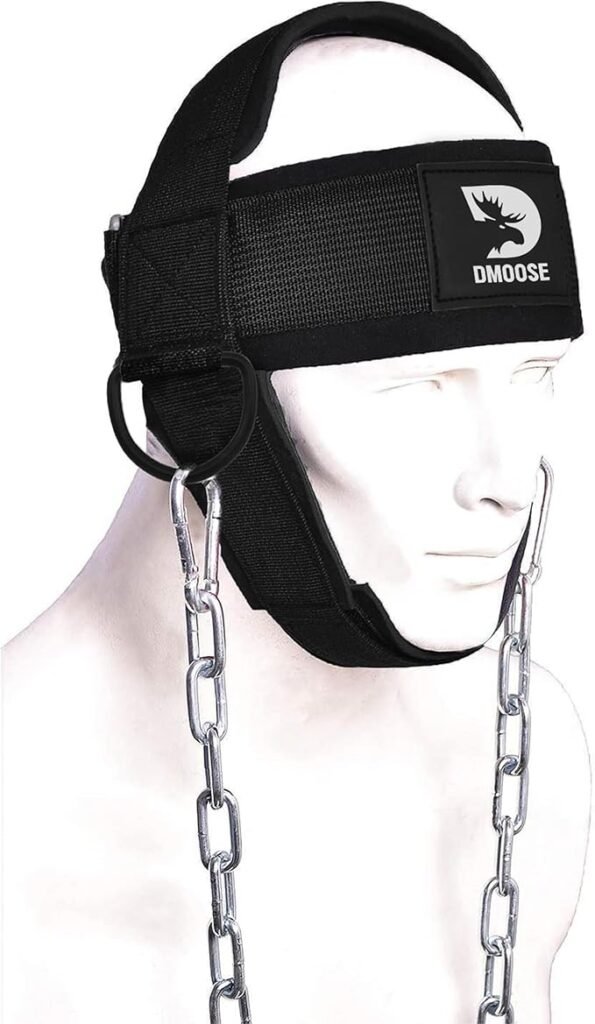
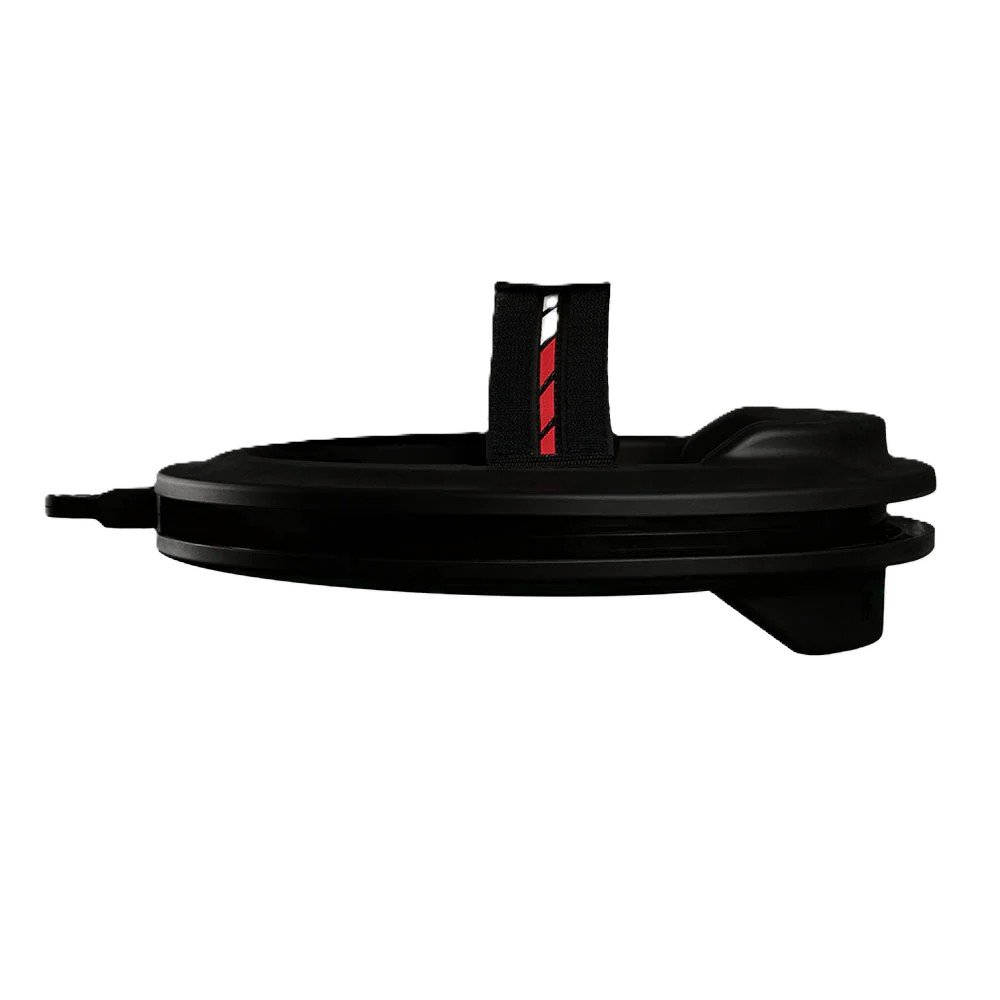
THERAPEUTIC
Therapeutic Neck Wedge – A great way to restore cervical curvature and relieve tightness.
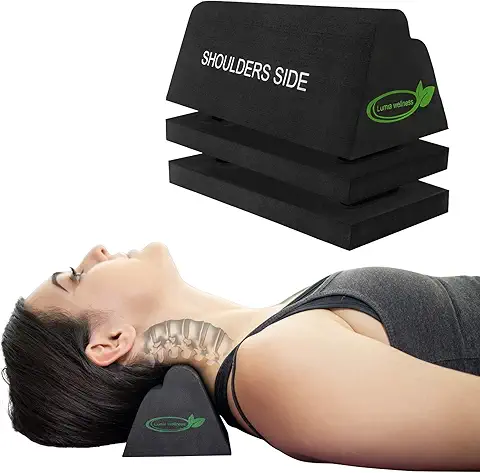
TRACTION
Cervical Traction Device – Helps with stretching and decompression.

What Else? Can strengthening your neck prevent concussions?
I have two boys, and we live in Texas, where football is more than just a sport—it’s a way of life. Here, Friday night lights shine bright, and kids grow up tossing a football before they can even walk. So, while I was initially hesitant about letting my 10- and 13-year-old sons play tackle football, I knew it was only a matter of time before they would want to join. Not only do we live in Texas, but all their friends are actively involved in the sport. Saying no would have been like keeping them out of a rite of passage.
My boys are athletic but on the smaller side, which only added to my concerns. Like any parent, I worried about injuries—sprains, fractures, and all the usual risks that come with contact sports—but my biggest fear was concussions. We’ve all heard the stories about long-term brain damage in football players, and I didn’t want to take any chances with my kids’ health. So, if you’re anything like me, constantly looking for ways to make your kids more resilient and reduce their risk of injury, you’ve probably found yourself deep in research, searching for anything that might help. I certainly did. While I quickly realized that no method could completely eliminate the risk of concussions, I also learned that there are ways to reduce the likelihood. And when it comes to your kids’ safety, any reduction in risk is a win.
One of the most eye-opening things I discovered was the importance of neck strength. At first, I thought neck exercises were mainly for preventing soreness or improving posture, but I was wrong. It turns out that strengthening the neck plays a huge role in concussion prevention, especially for young athletes. Studies have shown that a stronger neck can significantly decrease the risk of concussions. In fact, according to research published in the Journal of Primary Prevention, for every one-pound increase in neck strength, the odds of sustaining a concussion drop by 5%. This statistic stuck with me.
So, how does neck strengthening help reduce the potential for concussions?
The reason behind this is simple: strong neck muscles act as shock absorbers, stabilizing the head and reducing the acceleration that occurs upon impact. In a high-contact sport like football, where sudden collisions happen regularly, this can make all the difference. And it’s not just football—soccer players, wrestlers, and even basketball players can benefit from neck strengthening. It’s why more and more professional athletes are adding neck exercises to their training routines. If the pros see its value, why shouldn’t we?
So, after learning all this, I started incorporating neck-strengthening exercises into my boys’ training. Simple things like resistance band exercises, isometric holds, and controlled head movements have become a part of their routine. It gives me peace of mind knowing I’m doing something proactive to protect them. If your kids play contact sports, I highly recommend looking into it. Neck training isn’t just a good idea—it’s a must. Anything that helps keep our kids safer on the field is worth the effort.
Simple Ways To Start Strengthening Your Neck Today
If you’re ready to fix your neck pain, the first step is making neck training a consistent part of your routine. Here’s how to get started:
- Posture Check – Start by becoming aware of your posture throughout the day. Adjust your screen height and avoid slouching forward.
- Stretching Routine – Incorporate gentle neck stretches to relieve tightness before jumping into strength exercises.
- Strength Training – Use resistance bands or a device like the Iron Neck for controlled strength exercises.
- Gradual Progression – Don’t overdo it. Start with light resistance and slowly increase intensity over time.
- Daily Consistency – Like any other muscle, your neck needs regular training to stay strong and pain-free.
TOP 5 Strength Neck Training Devices
Overview:
The Alpha Harness Plus is a neck training device designed to enhance neck strength and mobility through various exercises, including linear and rotational movements. Constructed with high-strength materials, it features four side clips and two hanging clips, allowing for versatile training options. The harness includes a durable nylon tether for attaching weight plates, making it suitable for progressive resistance training.
Pros:
I appreciate the multiple attachment points, which enable me to perform a variety of neck exercises, targeting different muscle groups effectively.
The adjustable design ensures a snug fit, providing comfort and stability during my workouts
Cons:
I noticed that the harness can shift slightly during certain exercises, requiring occasional readjustment to maintain proper form.
While the harness is durable, I found that it’s not recommended for use with weights exceeding 100 lbs, which may limit advanced training.
Overview:
The AUVON Inflatable Neck Stretcher is a portable cervical traction device designed to relieve neck pain, tension, and stiffness. It features a 3-layer inflatable design with adjustable sizing to provide personalized support and decompression. Ideal for home or travel use, it aims to improve posture and restore the natural curve of the neck through gentle stretching.
Pros:
I really like how easy it is to inflate and adjust, so I can get just the right amount of stretch for my neck.
It’s super lightweight and compact, which makes it easy for me to take it with me when I travel.
Cons:
I noticed it can take a bit of fiddling to get it to sit perfectly around my neck without feeling awkward.
After a while, it started to lose a little air during longer sessions, so I had to reinflate it more often than I expected.
Overview:
The Iron Neck 3.0 is a neck training device designed to improve neck strength, mobility, and posture through 360-degree resistance training. It features a rotational track system that allows smooth, controlled movement in all directions. Commonly used by athletes and rehab professionals, it’s aimed at preventing injuries and enhancing performance.
Pros:
I can train my neck through a full range of motion, which helps me build balanced strength.
It’s been a great tool for helping me prevent injuries, especially since I’m active in sports.
Cons:
It was pretty pricey compared to other neck training options I looked at.
It took me a little while to figure out how to use it correctly and get the most out of it.
Overview:
The NecksLevel Glide is a neck rehabilitation device designed to improve neck strength, mobility, and posture through controlled, resistance-based exercises. Its compact design and smooth gliding mechanism make it suitable for home use, offering users an effective tool for addressing neck discomfort and enhancing overall neck health.
Pros:
I find that the NecksLevel Glide’s smooth gliding mechanism allows me to perform neck exercises comfortably and effectively.
The device’s compact design makes it convenient for me to use at home without requiring much space.
Cons:
I noticed that the NecksLevel Glide is relatively expensive compared to other neck rehabilitation tools.
While using the device, I found that it primarily targets specific neck movements, which might limit its versatility for comprehensive neck training.
Overview:
The RESTCLOUD Neck and Shoulder Relaxer is a cervical traction device designed to relieve neck pain, tension, and stiffness by gently stretching and aligning the cervical spine. It features a dense foam construction that cradles the neck and promotes relaxation through passive traction. Often used for just 10 minutes a day, it’s a simple, non-invasive tool for improving posture and easing discomfort.
Pros:
I love how it instantly relaxes my neck after a long day—I can feel the tension melting away within minutes.
It’s lightweight and easy to use, so I don’t need to mess with straps or adjustments.
Cons:
At first, it felt a bit uncomfortable, and it took me a few sessions to get used to the pressure.
It only supports a limited range of positions, so I wish it had a bit more versatility for different angles.
Final Thoughts: Take Control of Your Neck Health
I’ve learned the hard way that ignoring neck pain only makes it worse. If I could go back in time, I would have started strengthening my neck years ago. The good news? It’s never too late to start. Whether your goal is neck pain relief, concussion prevention, or just better posture, strengthening your neck can make a huge difference in how you feel every day.
So, what can you do to fix neck pain? Simple: start training, stay consistent, and listen to your body. You’ll be surprised at how much better you feel when your neck is strong and supported. Let’s ditch the stiffness, shake off the aches, and start moving pain-free!

